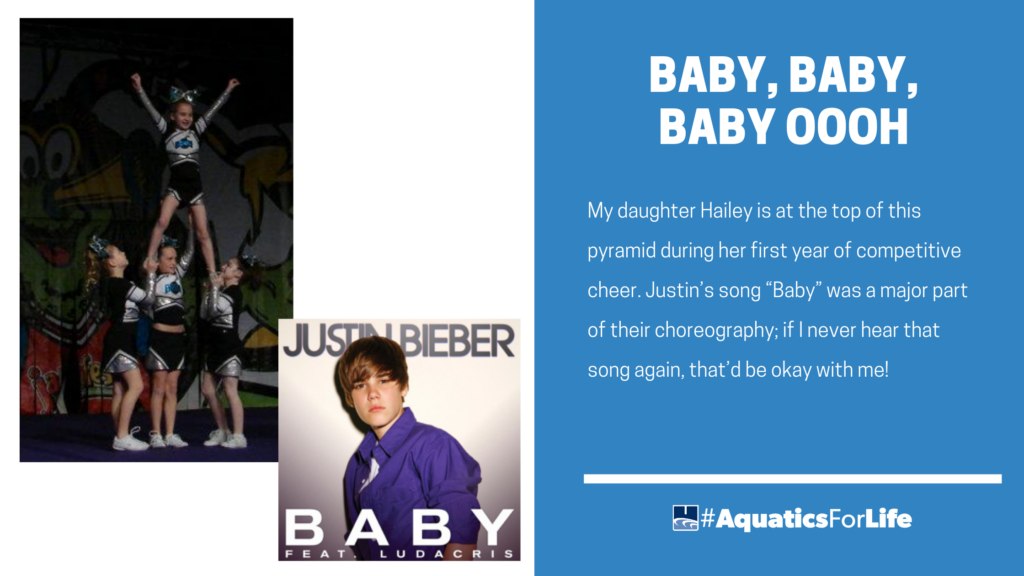 Happy 28th birthday, Justin Bieber! Oh, how far you’ve come. . .it’s hard to believe that just a dozen or so years ago, the entire catalog of your music could be summed up in a single “baby,” and your legions of fans were about to change the landscape of fandom, social media, and musical purchases forever. Your fans came together to create their own culture that brought the infancy of social media together with in-person organization to create a hyperconnected community. They strategically organized buy-outs at local stores and broke records in the world of online streaming. They even forced Twitter to change their trending topics algorithms to try to keep you from topping the daily list. Beliebers became the first true stans: overzealous and obsessed fans of the Beebs. So here we are, talking about Justin Bieber, but really it's all about building a fan club.
Happy 28th birthday, Justin Bieber! Oh, how far you’ve come. . .it’s hard to believe that just a dozen or so years ago, the entire catalog of your music could be summed up in a single “baby,” and your legions of fans were about to change the landscape of fandom, social media, and musical purchases forever. Your fans came together to create their own culture that brought the infancy of social media together with in-person organization to create a hyperconnected community. They strategically organized buy-outs at local stores and broke records in the world of online streaming. They even forced Twitter to change their trending topics algorithms to try to keep you from topping the daily list. Beliebers became the first true stans: overzealous and obsessed fans of the Beebs. So here we are, talking about Justin Bieber, but really it's all about building a fan club.
When you look at the army of Beliebers, it can feel like it happened organically, but the story goes that Beiber’s manager, Scooter Braun, met a group of teen fans at a meet-and-greet and suggested that they organize an Apple-style campout. He even kept in touch with them and had Justin himself comment on their Tweets, and he fed them insider information to help generate buzz. All of this is to say that it may feel organic, but it was organized and driven by people who wanted to build the Beiber brand and community.
While it might be terrifying for a superstar to have fans knocking down their doors, it’s something many organizations have tried to recreate over the years. Ken Blanchard & Sheldon Bowles wrote a book about it called Raving Fans: A Revolutionary Approach to Customer Service that is recommended by the notable Tony Robbins, and the idea has been discussed in countless articles and podcasts, and it’s a business strategy used by the likes of Chick-Fil-A and more.
On the surface, raving fans seem like they’re created by providing outstanding service, and that’s a massive part of it. Service is part of your overall culture, and creating a thriving culture can take your organization from having ‘customers’ to having an army of people who are genuinely excited – and talking about – your business! Get ready, prepare yourself, we are building a fan club!

So how can you create a culture that will generate Raving Fans in your Aquatics organization and build your fan club?
-
Know your mission & vision
Think about your mission or vision statement as a roadmap to success. Start by distilling your mission down to tangible things – understand not just what it means but what it looks like in action. If you don’t have a mission statement, check out the Carson Valley Swim Center’s Mission Statement here or the Bitterroot Aquatic Center Mission Statement published at the top of every Board Meeting Agenda & Meeting Minutes.
-
Get to know your users, and offer something unique
What’s that, you say? There’s only so much you can do with your aging facility? Friend. . .I HEAR you! My first position as an Aquatic Supervisor included a cadre of six aging, rectangular (read that as BORING) pools. I spent the greater part of a summer on the deck talking to the users and even more time asking my team what they heard on the deck. We customized programs (often free) for each facility, built summer school programs so that students could get free lunch in underserved neighborhoods, partnered with a local radio station and reached out to all of the third-grade teachers in the community to create a contest for the first ride down the water slide for the summer, and leaned into understanding the experience that our community wanted at each facility. Whether you offer a unique experience or a fun class, give people something to remember - something unique and meaningful to your community.
-
Adopt a “service-second” attitude
We all know safety is first (and we can have hours of discussions about all the safety-related things), but creating a culture among our team where they understand that guest experience is the next priority impacts how your community views your facility.
- Teach your team to view the facility through the guest’s eyes. Allow them to be a guest and have that experience. Let them swim, work out and use the showers; invite them to visit your website or do a mock program registration so that they understand the process; give them a discount on concessions so they can try the food.
- Teach your team to be intentional in their walk-throughs or even when they walk around the facility. Have them think about what they see and what they hear (is the music at the right volume?), smell, feel (from pool water to concessions area tables), and even taste.
- Institute a “see something-do something” philosophy. When your team sees something is out-of-place, give them the power (and the training) about how to record it, report it, and resolve it.
- When things go awry – and at some point, you know they will – make sure that you have a good plan in place. A good plan includes many different components, but it always starts with good training for your team. Include training on active listening and conflict resolution in orientation and in-service trainings; prepare your team by sharing common issues they might face; model issue response with your frontline leaders, and debrief with them afterward. Consider how your current policies and procedures affect dealing with unhappy customers. Do you give them the authority to offer a reasonable solution, or do policies (like a strict “no refund” policy on admissions, etc.) make it hard for them to come up with a good resolution?
-
Create a positive “confirmation bias” in your community
When you provide great guest experiences (clean, safe facilities, attentive staff, and great value) and high-level programming, your community will begin to have a favorable view of your operations. As they continue to have those experiences, they’ll share with their friends and family – and even if those folks have never personally had an experience with you, they’ll believe that you provide great experiences. And when things do not go as planned, everyone is quick to forgive you because they don’t want to believe that what they think about is wrong.
-
Don’t be afraid to redefine who you are
If there’s anything we’ve learned the last two years, it’s that things are constantly changing! As your community changes, don’t be afraid to find new ways to serve them, offer your team new training, or refresh a little, keep building that fan club!
-
Feedback matters!
Gather feedback from your users and program participants. Be on deck during open swim or classes, and ask how things are going. Collect program evaluations at the end of the session in person or via email, and give visitors a chance to submit feedback via comment cards or even a Google form. You might even consider holding a Community Feedback Meeting to discover what you’re doing great and where your community would like to see improvements. However you collect it, make sure that you review feedback and share it with your team so you can make decisions about how best to serve your community!

Altogether, focusing on creating great experiences can help you develop a community of raving fans, and those fans will often help spread the word organically about what you do by word of mouth, sharing social media posts, becoming unofficial brand ambassadors, and building a fan club. And as the culture of your organization shifts to activities that create raving fans, you’ll find your focus shift to managing – and growing – your business!
